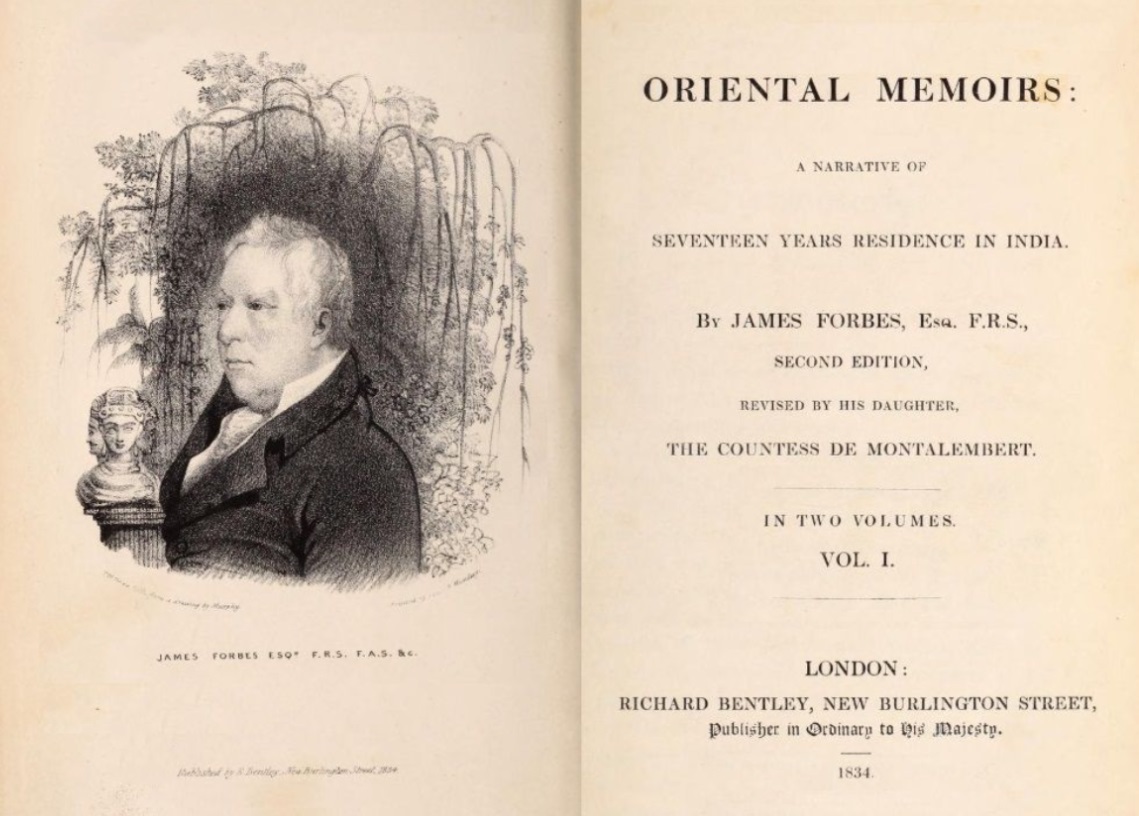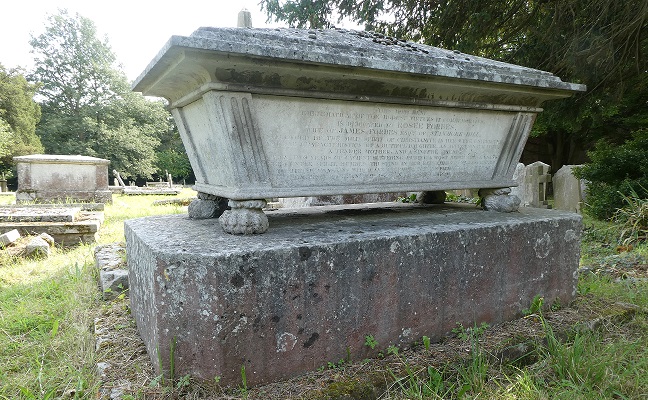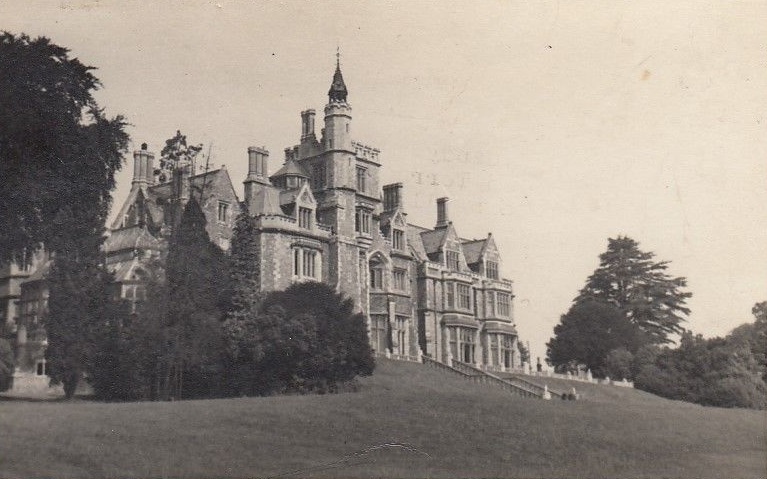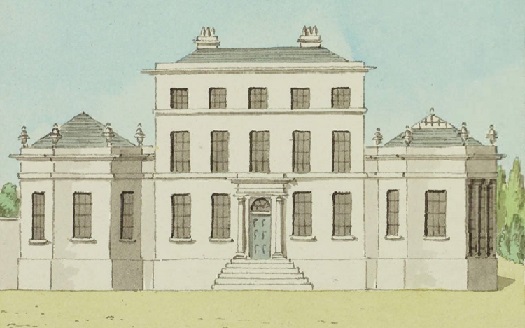The story of the plot of land around the current Stanmore Hall starts even before the Hall was built, the land belonged to Henry Brydges the second Duke of Chandos, who owned Canons and much of Little Stanmore. On this particular plot was his families Dower House. Dower Houses were generally built by the Lord of the Manor, an estate owner or nobility, and on the death of the titled peer, his widow often known as the 'dowager’, would usually move into the dower house from the larger family house whilst the new heir occupies the now vacated principal house.
In 1780 and in preperation for his retirement from The East India Company, James Forbes purchased part of the estate off the late Duke of Chandos, which included three significant properties, Warren House , Bowling Green House and the Dower House. In time he would also purchase the land between them and many of the fields adjoining Denis Lane consolidating them into a serious piece of real estate.
Forbes was in the service of the East India Company, and spent seventeen years living in India, it was during that time that he took an active interest of all aspects of Indian life, including botany, ethnology, and architecture. When he returned home to Stanmore in the 1780’s he brought with him his huge collection of notebooks, running into over fifty thousand pages, filled with sketches of animal’s, landscapes and religious objects. During his retirement he collated his drawings, letters and writings with a view to publishing them.
John Dalton, was the brother of the rector of this parish the Revd. James Dalton, and also good friend of Forbes and fellow employee of the East India company. James Forbes introduced John to his sister Elizabeth the couple hit it off and after a short courtship they married. After their wedding they came to live in Dower House and stayed there until Johns death in 1785. John was buried in St. Johns church, Elizabeth remained at the house until her death in 1812, when she was buried with John in a triple vault tomb in St. Johns graveyard.
James Forbes met Rose Gaylord, they were married in 1788, he significantly extended Dower House and had the grounds elegantly laid out. Their centrepiece was an octagonal pergola which Forbes had erected, and it was surrounded by Indian Sculptures. These pieces were gifts from the priests of Hindustan and had been presented as ‘a grateful acknowledgement of his benevolent attention to their happiness during a long residence among them’. The sculptures excited a good deal of local comment, and it was said “are very ancient and the only specimens of Hindoo sculpture in this island.”

Forbes finally published his works in 1813 which he entitled ‘Oriental memoirs’ written during his Seventeen Years Residence in India, including observations on Parts of Africa and South America. The book still remains a universally valued document of the culture, flora and fauna of India at the time.
In 1809 after a long illness Rose died, she was interned in the Gayland family tomb. A beautiful stone casket panelled on fours paws as feet. It has a thick stone base once railed and the inscription on the north side reads:
“This monument emblematical of the modest virtues it commemorates. Is dedicated to ROSEE FORBES. Wife of JAMES FORBES Esq of Stanmore-Hill. Influenced by the mild spirit of Christianity in her were united the amiable characteristics of a dutiful daughter, an affectionate wife. A tender mother, and a sincere fiend. After two years of patient suffering during a most afflicting illness her gentle spirit, humbly trusting in her redeemer’s love. Ascended to those mansions which are prepared for his faithful disciples. On the 5 of January 1809. In the 46 year of her age.”
James decided there wasn’t a lot left for him at Dower house so went back to the one thing that he had always enjoyed, travelling. He chose France as there was a lull in the fighting of the Napoleonic Wars. The peace was bought about by the treaty of Luneville and later by the Anglo-French Treaty of Amiens. He journeyed to France, which didn’t go too well for James as the hostilities kicked off again and was captured and imprisoned for a couple of years. After the wars finally ended in 1815 Forbes sold up the majority of his Stanmore Estate and travelled through Europe, he died at Aix la Chapelle Germany in 1819. His body was repatriated back to Stanmore and strangely was not buried, with his wife but in the family tomb of his old friend John Dalton and her wife./p>

where she was buried in 1809.
For the next 35 years the house changed hands between a who’s who of High-ranking Army officers and society gentry. In 1815 the estate was purchased by Roger Elliot Roberts of Upper Grosvenor Street, a Colonel in the service of the East India Company. Then in 1820 it went to General Alexander Campbell of Monzie. Campbell was a founding member of the Highland Society of Scotland, a Member of Parliament for Anstruther Easter burghs and Stirling, and during his military career he attained the rank of General in the British Army.
In 1825 the house was bought by Edward Orme of Bayswater, Orme’s profession was an engraver and painter and dabbled in property development. A prolific artist, his works totalling over 700 pieces, some of which are in the permanent collection of the national portrait gallery. Orme also produced some bespoke pieces for King George III. He published many books, subjects including, 'Rudiments of Landscape' in 1801 and 'Historic, Military, and Naval Anecdotes' in 1819.
To put his money to work Orme began purchasing land for development around his neighbourhood in Bayswater in 1808. The year after he purchased Dower House, He developed Orme Square from 1826 to 1828, which is still there and was named after him.
Making a quick buck, Orme sold the house on to Sir John Lambert GCB, a General in the British Army who served in the French Revolutionary Wars, the Napoleonic Wars and the War of 1812 and command the tenth brigade of British infantry at the Battle of Waterloo.
Next it was sold to one Thomas Teed of Argyll House in Richmond, Surrey. Teed was a businessman who had spent most of his working life in India. He lived there for the next seven years with his wife and young daughter Ellen Julia; they were the last residents of Dower house. The cost of repairs on the old property were mounting up and in 1842 Thomas decided to redevelop the property. It sat in its own grounds and being near the top of Stanmore Hill when the plans were drawn up it was decided to swing the entire plane of the property around in a south easterly direction to capitalise on the wonderful views over Harrow. The man in charge of overseeing this project would be the developer Matthew John Rhodes

The On Rhodes recommendation they employed John Macduff Derick to draw up plans for its redevelopment. Derrick was from Ireland and it was when he was training at Dublin university became a pupil of another leading light of the day, Sir John Soane. Soanes style was neo-classical and he would be remembered locally for works that he completed on Bentley Priory such as the rotunda, reception wing and the porte-cochere, and nationally for his work on the Royal Hospital Chelsea and the Bank of England. Derick couldn’t have been more different in his style, his work favoured an ecclesiastical gothic look with towers and turrets, medieval oriels and statues adjoining battlemented walls and gatehouses.
The result is the wonderfully gothic Stanmore Hall. Thomas Teeds daughter had by now got married, she married Robert Hollond the Whig MP for Hastings. Impressed by the new property the Hollond's decided to use it and make it their principal home. They lived together until Robert’s death in 1877. Julia would live here for the rest of her life and died at the Hall on 29 November 1884, she then joined her beloved Robert in the family mausoleum inside The brick church of St. Johns Stanmore.
In 1889 the Hall became the home of mining entrepreneur William Knox D’Arcy. Darcy had the concession for exploration in Persian for oil. On 26 May 1908 a company working on his concession found the biggest oilfield yet known in the world. This led in 1909 to the formation of a new company, Anglo-Persian Oil, which would later become British Petroleum. D’Arcy was appointed to the board of the new company, where he remained until his death. William Knox D’Arcy was buried in the churchyard of St. Johns.
The other Dower House
This Dower House is not to be confused with another property named Dower House on Stanmore Hill. This second house was sited just to the south of the original Dower House and at one point did actually sit on the Stanmore Hall estate, approximately where the road named Spring Lake is situated today. This property was originally called The Cottage, and was renamed The Dower House in 1923. This second Dower House also had some interesting history. In the 1940's it became the nerve center of radio related intelligence, being used as headquarters of “Batalion Lacznosci Sztabu” the Polish resistance movement communicating between their government in exile and the Polish Underground Army back in Poland, using radios built locally by the ‘Anglo-Polish radio wireless research and manufacturing company' based in Wykeham House, Gordon Avenue. They installed eight-meter radio masts around the property and liaised with agents Bletchley Park. The property was later owned by Joe Bamberger an American financier with an interest in the film industry who established a chain of theatres called Electric Films Ltd. The house was demolished around 1955.
It’s great to think that nearly 200 years later, Stanmore Hall is still standing having been granted grade II* listed status in 1971. In 1998 The site was converted by contractor Relicpride into 22 luxury apartments with 2.5 acres of historic grounds. The building has received Harrow Heritage brown plaque which is attached to the wall by the main gate in recognition of the building and its owners.
